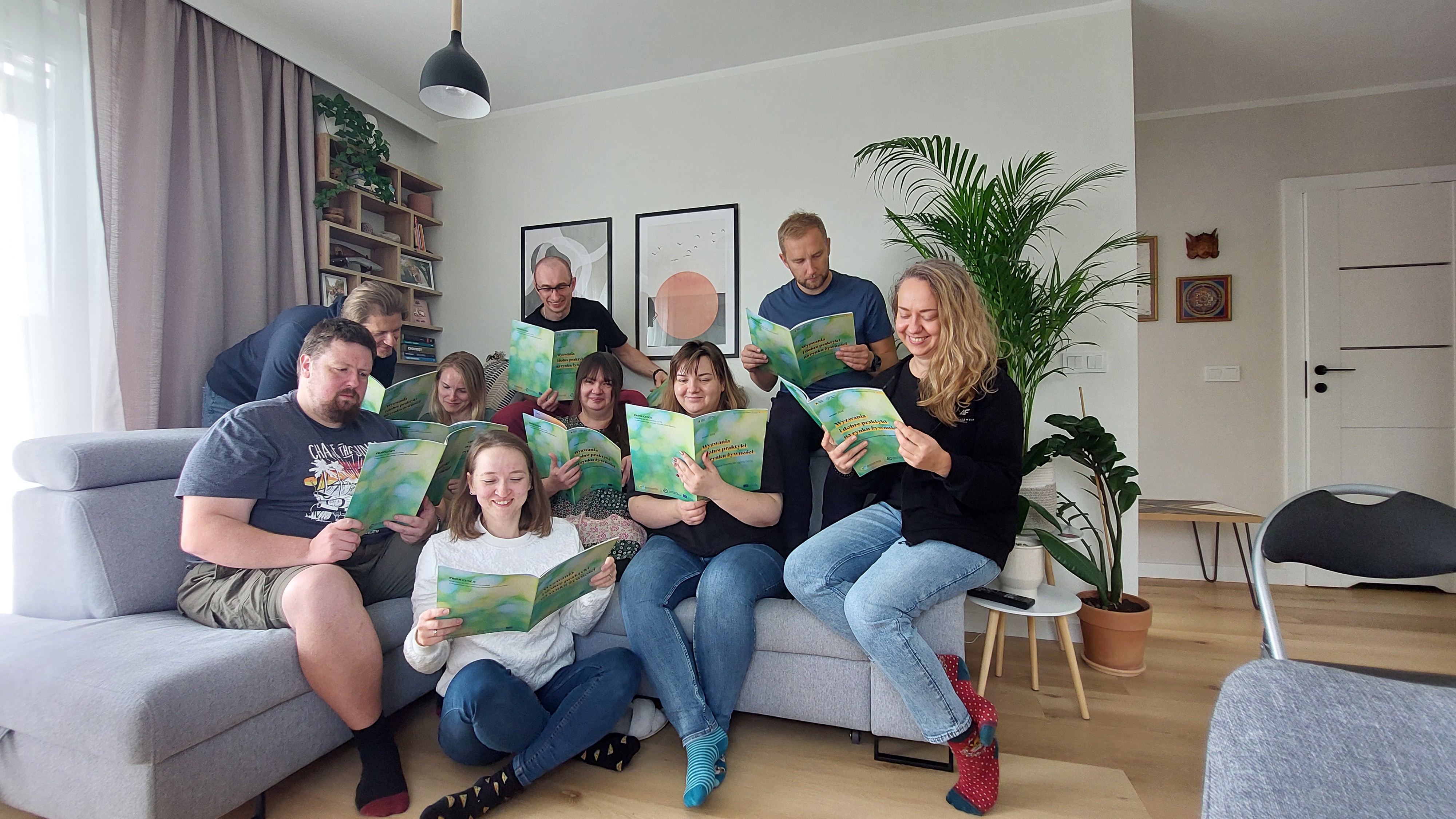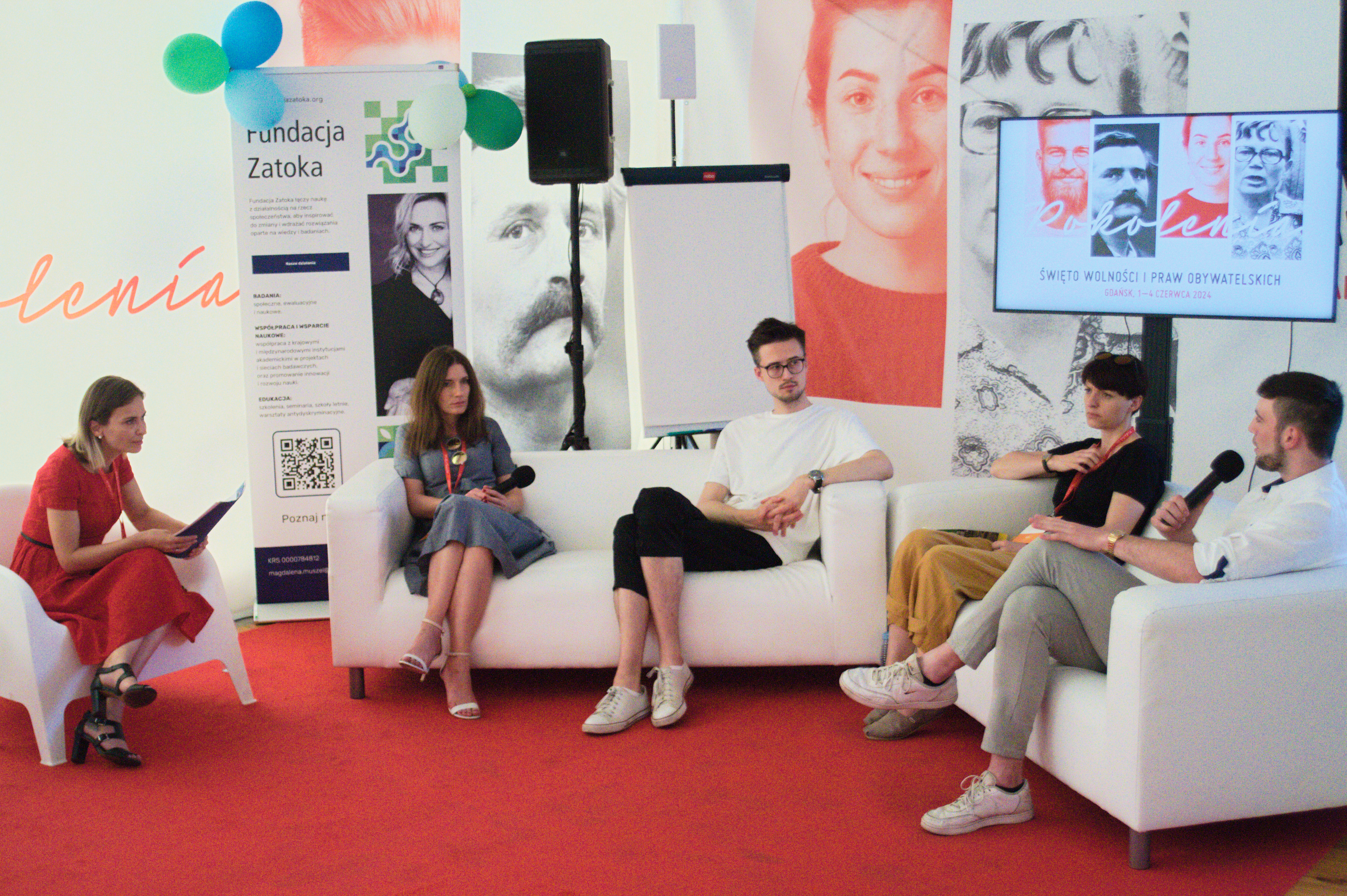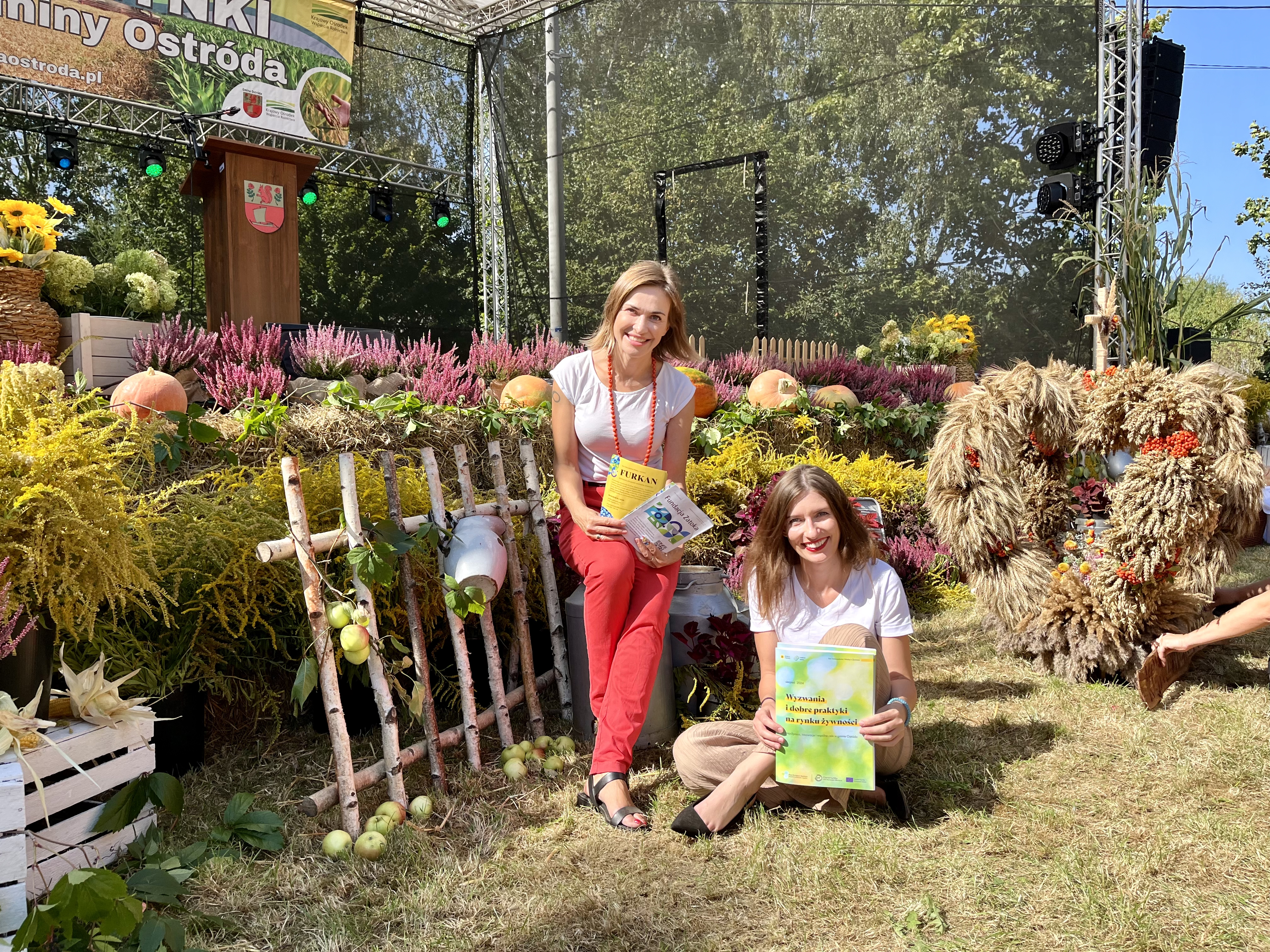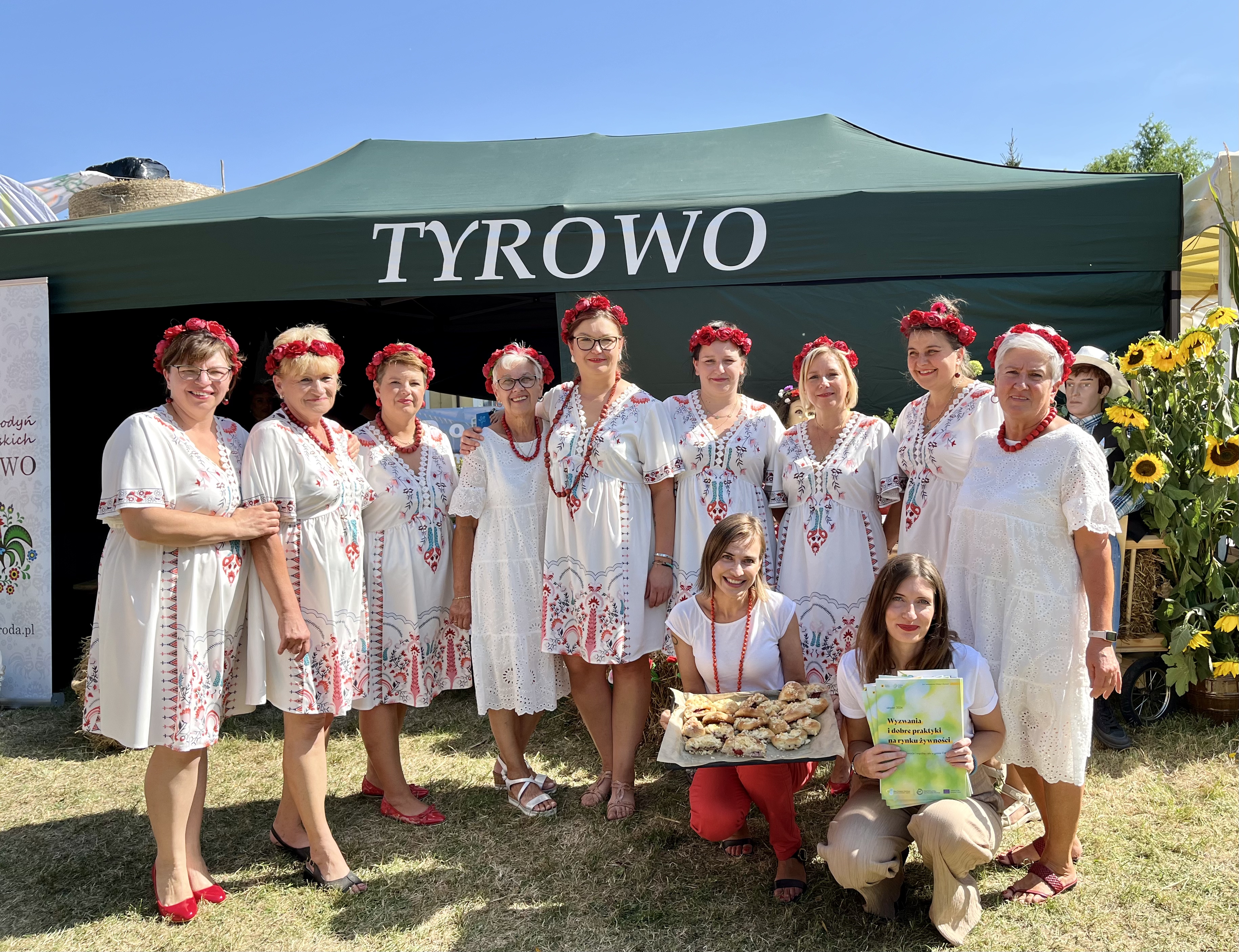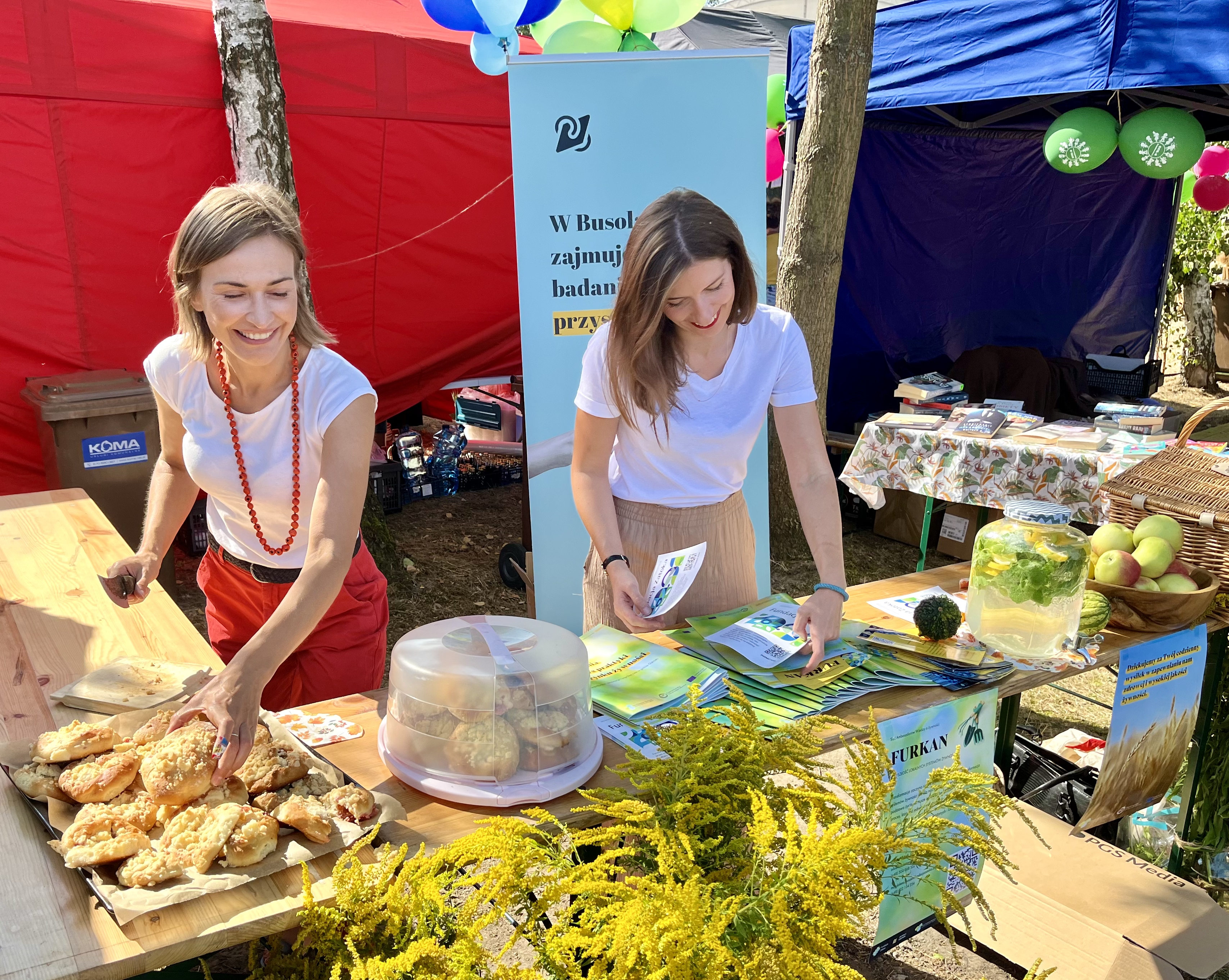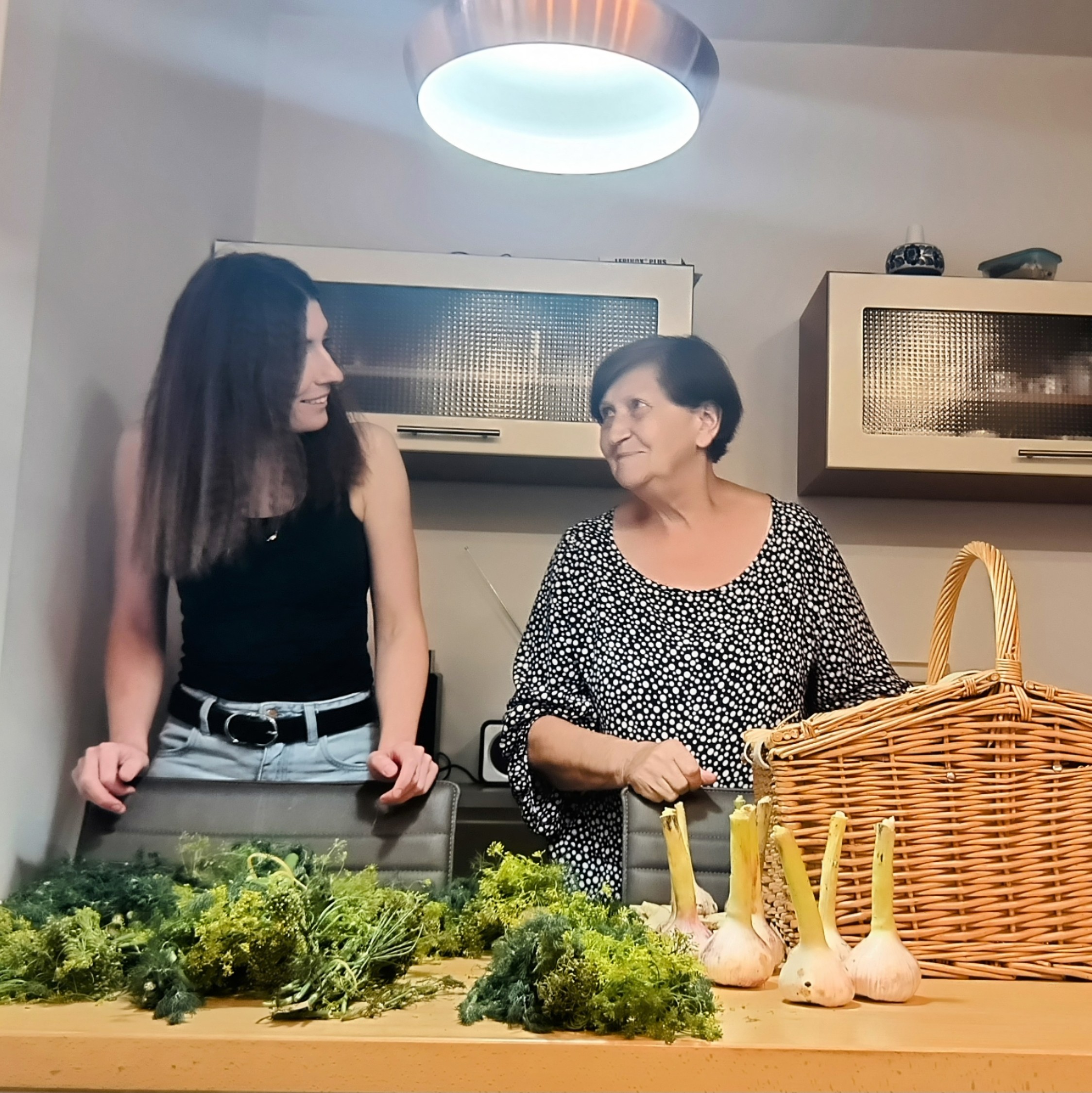Reconnecting with nature
FURKAN
Food Urban-Rural Knowledge Ambassadors Network
The future of food is the future of our health, safety, and environment. The FURKAN project represents an innovative approach to transforming the food system in the Ostróda community, bridging the gap between urban and rural areas. This initiative engages producers, consumers, and public administrations in a process of diagnosis, co-creation, and education. By identifying long-term challenges and selecting best practices, FURKAN leverages local wisdom to foster sustainable solutions.
Poland
Local
The project covers the city of Ostróda and 20 surrounding villages.The project address covered the area of the rural and urban municipality of Ostróda.
It addresses urban-rural linkages
It refers to other types of transformations (soft investment)
Yes
2024-11-30
Yes
The project is supported by EIT Food within the EIT Community NEB Connect initiative.
No
No
As a representative of an organisation
The FURKAN project was designed to foster collaboration between the city of Ostróda and its neighboring rural areas to develop a sustainable market for locally produced plant-based foods and promote sustainable consumption practices. This initiative successfully identified and addressed current and emerging challenges related to environmental sustainability, food quality, and stakeholder cooperation within the Ostróda commune.
By engaging a wide array of market participants, the project established itself as a regional guide to sustainable practices, aiming to create a resilient and sustainable food ecosystem. Throughout its execution, FURKAN implemented several strategies to achieve these goals, including the creation of the Food Urban-Rural Knowledge Ambassadors Network, which played a crucial role in disseminating knowledge and fostering community engagement. This network led to significant improvements in local collaboration and facilitated the adoption of sustainable practices among producers and consumers alike.
By engaging a wide array of market participants, the project established itself as a regional guide to sustainable practices, aiming to create a resilient and sustainable food ecosystem. Throughout its execution, FURKAN implemented several strategies to achieve these goals, including the creation of the Food Urban-Rural Knowledge Ambassadors Network, which played a crucial role in disseminating knowledge and fostering community engagement. This network led to significant improvements in local collaboration and facilitated the adoption of sustainable practices among producers and consumers alike.
urban-rural integration
small-scale plant-based food production
community knowledge & collaboration
sustainable agriculture and consumption
future-proof resilience
One of our primary objectives was to directly address the substantial gap in ecological education and to correct ongoing unsustainable practices rooted in a lack of awareness.
Tailored sustainable development practices:
In the project, an extensive diagnostic assessment was conducted across three critical areas: food safety and quality, environmental changes, and collaboration. This process led to the identification of 30 key challenges. These challenges were prioritized, and in collaboration with local stakeholders, effective practices and innovations. These chosen practices and innovations support sustainable food practices within each of the three areas.
Food Urban-Rural Knowledge Ambassadors Network: The project successfully established the Food Urban-Rural Knowledge Ambassadors Network, engaging 18 ambassadors who reached out to over 250 local residents. These ambassadors were instrumental in disseminating knowledge on advanced sustainable practices such as hydroponics and smart pest traps. The project helped create robust support networks among producers, enabling peer-to-peer learning and support in adopting new technologies such as drip irrigation.
Empowerment of vulnerable groups: We specifically targeted elderly community members and rural women’s associations, who are often sidelined in technological and educational advancements. The project significantly improved their access to new sustainable methods, thereby enhancing their participation in local sustainable development.
Consumer education: The project identified a critical need for consumer education regarding the benefits of organic and locally produced food. Through extensive educational campaigns and interactive workshops, we were able to foster a better understanding and increased demand for sustainable products, bridging the gap between local production and conscious consumption.
Tailored sustainable development practices:
In the project, an extensive diagnostic assessment was conducted across three critical areas: food safety and quality, environmental changes, and collaboration. This process led to the identification of 30 key challenges. These challenges were prioritized, and in collaboration with local stakeholders, effective practices and innovations. These chosen practices and innovations support sustainable food practices within each of the three areas.
Food Urban-Rural Knowledge Ambassadors Network: The project successfully established the Food Urban-Rural Knowledge Ambassadors Network, engaging 18 ambassadors who reached out to over 250 local residents. These ambassadors were instrumental in disseminating knowledge on advanced sustainable practices such as hydroponics and smart pest traps. The project helped create robust support networks among producers, enabling peer-to-peer learning and support in adopting new technologies such as drip irrigation.
Empowerment of vulnerable groups: We specifically targeted elderly community members and rural women’s associations, who are often sidelined in technological and educational advancements. The project significantly improved their access to new sustainable methods, thereby enhancing their participation in local sustainable development.
Consumer education: The project identified a critical need for consumer education regarding the benefits of organic and locally produced food. Through extensive educational campaigns and interactive workshops, we were able to foster a better understanding and increased demand for sustainable products, bridging the gap between local production and conscious consumption.
1. Objective: The project's integration of local cultural with educational activities.
All promotional events, such as the Social Zone, Harvest Festival, and Women for Climate, were prepared through collaboration between the project team and the local community. Our producers prepared delicious yeast buns with local and seasonal fruits during the Harvest Festival. Our stand was decorated with local herbs, and people were encouraged to meet us, eat something, and discuss sustainable food. During the social zone, together with our producers and local vegetable stores, we prepared packages of starters for pickled cucumbers (Ostróda recipe) for the participants.
2. Objective: Aesthetic and engaging educational materials.
We have developed a consistent visual identity and published a total of 4 publications that show the results of the diagnosis, present a long-term perspective, i.e., the impact of megatrends, and present good practices. Each publication was carefully designed graphically and published in high quality to engage and encourage reading the content.
3. Objective: Creating a pleasant space for co-creation.
During our foresight workshops, in which producers, consumers, city and rural municipality representatives, educators, and food quality control institutions participated. The participants' task was to develop the most adapted solutions to the main challenges in their food system. Everyone could present their own, completely different perspective. We also made a mini-exhibition showing the visual difference between vegetables produced sustainably and those from mass production, overfertilized, and with pesticides. We should promote beauty in imperfect forms, but healthy and sustainable.
Celebrating local traditions and produce not only fosters a deeper connection between participants and sustainable practices but also amplifies the cultural uniqueness of the Ostróda region, making sustainability personally relevant and accessible to all attendees.
All promotional events, such as the Social Zone, Harvest Festival, and Women for Climate, were prepared through collaboration between the project team and the local community. Our producers prepared delicious yeast buns with local and seasonal fruits during the Harvest Festival. Our stand was decorated with local herbs, and people were encouraged to meet us, eat something, and discuss sustainable food. During the social zone, together with our producers and local vegetable stores, we prepared packages of starters for pickled cucumbers (Ostróda recipe) for the participants.
2. Objective: Aesthetic and engaging educational materials.
We have developed a consistent visual identity and published a total of 4 publications that show the results of the diagnosis, present a long-term perspective, i.e., the impact of megatrends, and present good practices. Each publication was carefully designed graphically and published in high quality to engage and encourage reading the content.
3. Objective: Creating a pleasant space for co-creation.
During our foresight workshops, in which producers, consumers, city and rural municipality representatives, educators, and food quality control institutions participated. The participants' task was to develop the most adapted solutions to the main challenges in their food system. Everyone could present their own, completely different perspective. We also made a mini-exhibition showing the visual difference between vegetables produced sustainably and those from mass production, overfertilized, and with pesticides. We should promote beauty in imperfect forms, but healthy and sustainable.
Celebrating local traditions and produce not only fosters a deeper connection between participants and sustainable practices but also amplifies the cultural uniqueness of the Ostróda region, making sustainability personally relevant and accessible to all attendees.
Accessibility and affordability: The project made sustainable food practices accessible by organizing workshops and distributing educational materials in various formats suitable for all community members, regardless of their digital literacy or economic status.
Inclusive governance and engagement: FURKAN actively involved a diverse group of stakeholders in its planning and execution phases. This approach fostered an inclusive governance structure that allowed for the voices of traditionally underrepresented groups to be heard and integrated into the project's development. Women, elderly community members, and small producers played critical roles in shaping the project's activities and focus areas.
Design for all: Creating a co-creative workshop environment where diverse community members can actively participate and contribute to shaping their food system exemplifies best practices in participatory governance. This setting not only democratizes the process of sustainable development but also ensures that solutions are holistically developed and culturally adapted, enhancing their effectiveness and acceptance within the community.
Empowering local leaders: By training local ambassadors and engaging them in the dissemination of knowledge and best practices, the project empowered local leaders to take charge of promoting sustainability in their communities. This not only built capacity at a local level but also ensured that the project had a sustainable and long-lasting impact.
Community-centric solutions: The engagement process was tailored to meet the specific needs and contexts of the Ostróda community. This tailored approach ensured that the solutions developed were not only sustainable but also culturally appropriate and widely accepted by the community members.
Inclusive governance and engagement: FURKAN actively involved a diverse group of stakeholders in its planning and execution phases. This approach fostered an inclusive governance structure that allowed for the voices of traditionally underrepresented groups to be heard and integrated into the project's development. Women, elderly community members, and small producers played critical roles in shaping the project's activities and focus areas.
Design for all: Creating a co-creative workshop environment where diverse community members can actively participate and contribute to shaping their food system exemplifies best practices in participatory governance. This setting not only democratizes the process of sustainable development but also ensures that solutions are holistically developed and culturally adapted, enhancing their effectiveness and acceptance within the community.
Empowering local leaders: By training local ambassadors and engaging them in the dissemination of knowledge and best practices, the project empowered local leaders to take charge of promoting sustainability in their communities. This not only built capacity at a local level but also ensured that the project had a sustainable and long-lasting impact.
Community-centric solutions: The engagement process was tailored to meet the specific needs and contexts of the Ostróda community. This tailored approach ensured that the solutions developed were not only sustainable but also culturally appropriate and widely accepted by the community members.
Citizens and civil society played crucial roles in the Food Urban-Rural Knowledge Ambassadors Network project, engaging as both participants and collaborators throughout various phases.
Local producers and consumers: They were directly involved in the diagnostic and solution-building phases. Local producers participated in surveys and interviews to identify key challenges and viable solutions. This direct feedback was crucial for tailoring the project's actions to real-world needs and ensuring that the solutions were practical and applicable.
Food Knowledge Ambassadors: Drawn from local citizens, these ambassadors were trained and then led the outreach within their communities. They organized and conducted educational events that disseminated knowledge about sustainable practices and the dangers of unsustainable farming practices like the use of glyphosate. Their role was pivotal in translating the project’s objectives into actionable knowledge, making a significant impact at the grassroots level.
Civil society organizations: NGOs like Fundacja Zatoka and community groups such as Women’s Circles and local educational institutions were involved as partners. They facilitated the integration of project activities into community events like the Harvest Festival and Social Zone events, which helped to reach a broader audience. Their networks and credibility boosted the project’s visibility and acceptance.
Strengthening of local networks: The project fostered collaboration among various stakeholders, including producers, consumers, NGOs, and local authorities. This strengthened network is a sustainable outcome that enhances the community’s capacity to address food sustainability challenges collaboratively.
Local producers and consumers: They were directly involved in the diagnostic and solution-building phases. Local producers participated in surveys and interviews to identify key challenges and viable solutions. This direct feedback was crucial for tailoring the project's actions to real-world needs and ensuring that the solutions were practical and applicable.
Food Knowledge Ambassadors: Drawn from local citizens, these ambassadors were trained and then led the outreach within their communities. They organized and conducted educational events that disseminated knowledge about sustainable practices and the dangers of unsustainable farming practices like the use of glyphosate. Their role was pivotal in translating the project’s objectives into actionable knowledge, making a significant impact at the grassroots level.
Civil society organizations: NGOs like Fundacja Zatoka and community groups such as Women’s Circles and local educational institutions were involved as partners. They facilitated the integration of project activities into community events like the Harvest Festival and Social Zone events, which helped to reach a broader audience. Their networks and credibility boosted the project’s visibility and acceptance.
Strengthening of local networks: The project fostered collaboration among various stakeholders, including producers, consumers, NGOs, and local authorities. This strengthened network is a sustainable outcome that enhances the community’s capacity to address food sustainability challenges collaboratively.
The FURKAN project adeptly engaged stakeholders across various levels—local, regional, national, and European—enhancing the project’s implementation and broadening its impact. Each group contributed unique perspectives and resources, critical for the project’s success.
Local Level:
Local stakeholders included plant-based food producers, businesses, and consumers in Ostróda. They participated in diagnostic surveys and foresight workshops, offering insights into agricultural challenges and opportunities, thus ensuring that solutions were relevant and actionable. Local businesses supported project promotion and integrated sustainable practices into their operations, boosting local economic sustainability.
Regional Level:
At the regional level, educational and food quality control institutions like the Ostróda Agricultural School played vital roles. They participated in the diagnostic and solution-building phases, linking academic research with practical application. The project also gained official endorsements from the mayor of Ostróda and the head of the rural municipality, solidifying its regional significance and ensuring alignment with local governance.
National Level:
Nationally, the project connected with environmental and agricultural experts who enhanced the content of publications and workshops. Their expertise ensured the project aligned with national sustainable practices and policies, raising its profile and effectiveness.
European Level:
European engagement came through collaboration with entities associated with the New European Bauhaus initiative (EIT Food), which provided strategic support and funding. This partnership helped integrate innovative practices from across the EU, ensuring the project’s initiatives were scalable and replicable in different regions.
Local Level:
Local stakeholders included plant-based food producers, businesses, and consumers in Ostróda. They participated in diagnostic surveys and foresight workshops, offering insights into agricultural challenges and opportunities, thus ensuring that solutions were relevant and actionable. Local businesses supported project promotion and integrated sustainable practices into their operations, boosting local economic sustainability.
Regional Level:
At the regional level, educational and food quality control institutions like the Ostróda Agricultural School played vital roles. They participated in the diagnostic and solution-building phases, linking academic research with practical application. The project also gained official endorsements from the mayor of Ostróda and the head of the rural municipality, solidifying its regional significance and ensuring alignment with local governance.
National Level:
Nationally, the project connected with environmental and agricultural experts who enhanced the content of publications and workshops. Their expertise ensured the project aligned with national sustainable practices and policies, raising its profile and effectiveness.
European Level:
European engagement came through collaboration with entities associated with the New European Bauhaus initiative (EIT Food), which provided strategic support and funding. This partnership helped integrate innovative practices from across the EU, ensuring the project’s initiatives were scalable and replicable in different regions.
Within the framework of the project, 25 interviews were conducted with experts from various fields, 160 interviews with consumers, 75 interviews with plant-based food producers, and workshops were organized with stakeholders including representatives from education, public administration, producers, consumers, business, and regulatory institutions.
Disciplines involved:
Agricultural sciences: Key for understanding and addressing the technical and environmental aspects of plant-based food production.
Sociology and anthropology: These fields helped in understanding consumer behavior and cultural dimensions of food consumption.
Economics and rural Development: Important for addressing economic challenges and opportunities within the local food market and enhancing sustainability.
Environmental science: Focused on the impacts of food production on local ecosystems and contributed to developing sustainable agricultural practices.
Food Safety and quality control: Ensured that the project's outcomes met regulatory standards and consumer expectations for quality and safety.
Added value:
Holistic understanding: The collaboration among different fields provided a more complete understanding of the challenges and opportunities within the food system.
Innovation through diversity: By bringing together diverse perspectives, the project fostered innovative ideas that might not have emerged within a single-discipline approach. This was particularly evident in the development of a catalog of best practices that combined insights from environmental science, agricultural practices, and consumer behavior.
Community and stakeholder engagement: The integration of sociology and anthropology helped tailor approaches that were culturally and socially sensitive, increasing community engagement and acceptance of the project outcomes.
Disciplines involved:
Agricultural sciences: Key for understanding and addressing the technical and environmental aspects of plant-based food production.
Sociology and anthropology: These fields helped in understanding consumer behavior and cultural dimensions of food consumption.
Economics and rural Development: Important for addressing economic challenges and opportunities within the local food market and enhancing sustainability.
Environmental science: Focused on the impacts of food production on local ecosystems and contributed to developing sustainable agricultural practices.
Food Safety and quality control: Ensured that the project's outcomes met regulatory standards and consumer expectations for quality and safety.
Added value:
Holistic understanding: The collaboration among different fields provided a more complete understanding of the challenges and opportunities within the food system.
Innovation through diversity: By bringing together diverse perspectives, the project fostered innovative ideas that might not have emerged within a single-discipline approach. This was particularly evident in the development of a catalog of best practices that combined insights from environmental science, agricultural practices, and consumer behavior.
Community and stakeholder engagement: The integration of sociology and anthropology helped tailor approaches that were culturally and socially sensitive, increasing community engagement and acceptance of the project outcomes.
1. Integrated consumer and producer engagement: Unlike conventional projects that might focus solely on production or consumption, FURKAN actively integrated both ends of the food chain. This project not only gathered insights from consumers regarding their preferences and behaviors but also directly involved producers in identifying challenges and co-creating solutions.
2. Local knowledge ambassadors: The project pioneered the use of Food Knowledge Ambassadors, local stakeholders who were trained to act as liaisons between the project team and the community. These ambassadors played a critical role in disseminating knowledge and best practices through workshops and local gatherings, a grassroots approach that enhances sustainability and local ownership of project outcomes.
3. Support for women leaders: The project also emphasized empowering women, particularly those involved in local Women’s Circles. This was crucial in a region where agriculture is traditionally male-dominated. Many women possess incredible ideas and potential to drive changes in the food system. Women leaders who served as ambassadors were particularly effective at building cooperation networks.
4. Foresight: Employing foresight strategies in workshop settings allowed for forward-thinking planning that is not commonly applied at the local level in food systems. These workshops facilitated a long-term perspective among participants, encouraging them to consider future challenges and opportunities rather than only immediate concerns, leading to more sustainable and innovative solutions.
5. Customized local solutions: By focusing intensely on the specific needs and conditions of the Ostróda region, the project was able to develop customized solutions that are more effective than one-size-fits-all approaches. This localization of strategy and execution sets the project apart as a model for others seeking to implement sustainable food systems in diverse contexts.
2. Local knowledge ambassadors: The project pioneered the use of Food Knowledge Ambassadors, local stakeholders who were trained to act as liaisons between the project team and the community. These ambassadors played a critical role in disseminating knowledge and best practices through workshops and local gatherings, a grassroots approach that enhances sustainability and local ownership of project outcomes.
3. Support for women leaders: The project also emphasized empowering women, particularly those involved in local Women’s Circles. This was crucial in a region where agriculture is traditionally male-dominated. Many women possess incredible ideas and potential to drive changes in the food system. Women leaders who served as ambassadors were particularly effective at building cooperation networks.
4. Foresight: Employing foresight strategies in workshop settings allowed for forward-thinking planning that is not commonly applied at the local level in food systems. These workshops facilitated a long-term perspective among participants, encouraging them to consider future challenges and opportunities rather than only immediate concerns, leading to more sustainable and innovative solutions.
5. Customized local solutions: By focusing intensely on the specific needs and conditions of the Ostróda region, the project was able to develop customized solutions that are more effective than one-size-fits-all approaches. This localization of strategy and execution sets the project apart as a model for others seeking to implement sustainable food systems in diverse contexts.
Consumer opinion survey: The goal was to identify purchasing habits, opinions about local food, and expectations and concerns about the future. The sample included 160 consumers, ensuring a maximum error margin of 8% at a 95% confidence level.
Producer challenges survey: Focused on diagnosing key challenges among local plant-based food producers, including farmers, fruit growers, gardeners, gatherers, and processors. Mini-interviews assisted by a questionnaire were conducted with 75 producers.
Expert interviews : Deepened understanding of challenges from an expert perspective, identifying priority challenges for the region and suggesting optimal development directions. This included initial attempts at mapping good practices through IDI with 25 experts.
Megatrend impact analysis on food systems: The analysis aimed to predict key megatrends impacting small food producers, using a matrix method based on data from the Megatrends HUB of the EU. This linkage identification and impact strength analysis were crucial for strategic planning.
Good practices: Created a database of good practices addressing key challenges of the local food system, developed from literature review, trend analysis, and change signals. In workshops where participants worked on thematic tables covering food safety and quality, environmental changes, and collaboration.
Educational brochure development: Aimed at preparing an informational brochure tailored to the needs of the local community, detailing challenges in the food system and possible good practices. A total of 150 brochures were printed and also made available digitally.
Education initiative: Aimed at educating the urban and rural local community, including small food producers, about the challenges and good practices related to the local food system.Network of ambassadors who used the brochure to share knowledge in their communities and organized 25 educational events, involving 250 members from the local community.
Producer challenges survey: Focused on diagnosing key challenges among local plant-based food producers, including farmers, fruit growers, gardeners, gatherers, and processors. Mini-interviews assisted by a questionnaire were conducted with 75 producers.
Expert interviews : Deepened understanding of challenges from an expert perspective, identifying priority challenges for the region and suggesting optimal development directions. This included initial attempts at mapping good practices through IDI with 25 experts.
Megatrend impact analysis on food systems: The analysis aimed to predict key megatrends impacting small food producers, using a matrix method based on data from the Megatrends HUB of the EU. This linkage identification and impact strength analysis were crucial for strategic planning.
Good practices: Created a database of good practices addressing key challenges of the local food system, developed from literature review, trend analysis, and change signals. In workshops where participants worked on thematic tables covering food safety and quality, environmental changes, and collaboration.
Educational brochure development: Aimed at preparing an informational brochure tailored to the needs of the local community, detailing challenges in the food system and possible good practices. A total of 150 brochures were printed and also made available digitally.
Education initiative: Aimed at educating the urban and rural local community, including small food producers, about the challenges and good practices related to the local food system.Network of ambassadors who used the brochure to share knowledge in their communities and organized 25 educational events, involving 250 members from the local community.
The FURKAN project focused on identifying challenges in the local plant-based food system, setting development directions, and selecting solutions and best practices. In the diagnostic phase, we identified 30 key challenges in three areas: food safety and quality, environmental changes, and collaboration. This project amassed a wealth of knowledge that can be readily utilized in other regions. Our challenge map accelerates the diagnostic process to merely determining the impact strength of these challenges from a regional perspective. By assessing the impact strength, we can immediately understand the influence of megatrends on the food system in the region and define priority directions.
Proposal to shorten the process based on our tools: Additionally, through the implementation of the project, we developed numerous materials and valuable knowledge that could be beneficial for you.
Research Tools: We developed research, recruitment, and contact databases for the entire diagnostic process, including interview scenarios with experts, a list of experts and innovators, interview scenarios with producers, and survey questionnaires for consumer and producer studies.
Megatrend impact matrices: We believe this is the most valuable part as it can significantly shorten the work on properly targeting policy in the region by setting priorities. We identified 30 challenges, each analyzed against 14 megatrends considering qualitative impact and score assessment. This model can be replicated in your region to shorten the diagnostic process, use the challenges we identified, and developed matrices to assess how key challenges will be shaped under the influence of global forces.
Catalogs of best Practices and case studies: For solution building, we developed internal catalogs of best practices, innovations, and case studies covering various cooperation models.
Proposal to shorten the process based on our tools: Additionally, through the implementation of the project, we developed numerous materials and valuable knowledge that could be beneficial for you.
Research Tools: We developed research, recruitment, and contact databases for the entire diagnostic process, including interview scenarios with experts, a list of experts and innovators, interview scenarios with producers, and survey questionnaires for consumer and producer studies.
Megatrend impact matrices: We believe this is the most valuable part as it can significantly shorten the work on properly targeting policy in the region by setting priorities. We identified 30 challenges, each analyzed against 14 megatrends considering qualitative impact and score assessment. This model can be replicated in your region to shorten the diagnostic process, use the challenges we identified, and developed matrices to assess how key challenges will be shaped under the influence of global forces.
Catalogs of best Practices and case studies: For solution building, we developed internal catalogs of best practices, innovations, and case studies covering various cooperation models.
Food safety and quality: This area addresses issues such as HACCP challenges, mechanical contaminants, microplastics, mycotoxins, and the aging producer community. These challenges directly impact consumer health and the reliability of the food supply. The project implemented comprehensive diagnostics to understand and improve nutritional value and manage risks like contamination and poor handling practices. Improving food safety and quality has a direct correlation with reducing health risks globally, ensuring that local food systems contribute to safer, healthier food production practices worldwide.
Environmental changes: The project addressed critical environmental issues such as soil fertility loss, water pollution, deforestation, drought, and the impact of climate change on agricultural cycles and plant varieties. It promoted sustainable agricultural practices like agroforestry, drip irrigation, and hydroponics. The project offers a template for combating global environmental challenges like climate change and resource scarcity, demonstrating how local actions can influence broader environmental resilience.
Collaboration in food systems:
Tackled the lack of collaboration between urban and rural areas, which often function as separate entities, leading to inefficiencies and wasted potential. Promoted strong networks through the establishment of cooperative models and community-supported agriculture programs, linking producers directly with consumers and businesses. Enhancing collaboration helps to streamline the food supply chain globally, reduce wastage, and optimize resource use.
The FURKAN project its focused approach on food safety and quality, environmental changes, and collaboration. These insights address pressing global challenges by showing how localized solutions can be crafted to enhance food systems' resilience, sustainability, and inclusiveness not only improve local conditions but also offer a roadmap for global stakeholders.
Environmental changes: The project addressed critical environmental issues such as soil fertility loss, water pollution, deforestation, drought, and the impact of climate change on agricultural cycles and plant varieties. It promoted sustainable agricultural practices like agroforestry, drip irrigation, and hydroponics. The project offers a template for combating global environmental challenges like climate change and resource scarcity, demonstrating how local actions can influence broader environmental resilience.
Collaboration in food systems:
Tackled the lack of collaboration between urban and rural areas, which often function as separate entities, leading to inefficiencies and wasted potential. Promoted strong networks through the establishment of cooperative models and community-supported agriculture programs, linking producers directly with consumers and businesses. Enhancing collaboration helps to streamline the food supply chain globally, reduce wastage, and optimize resource use.
The FURKAN project its focused approach on food safety and quality, environmental changes, and collaboration. These insights address pressing global challenges by showing how localized solutions can be crafted to enhance food systems' resilience, sustainability, and inclusiveness not only improve local conditions but also offer a roadmap for global stakeholders.
The FURKAN project significantly advanced the category of "Reconnecting with Nature" by focusing on education about sustainable agricultural practices and raising environmental awareness.
Through various workshops and the creation of the Food Urban-Rural Knowledge Ambassadors Network, the project disseminated information on sustainable practices such as biological pest control, the use of UV-C lighting in greenhouses to minimize chemical use, and the cultivation of local plant varieties adapted to regional environmental conditions. These educational efforts aimed to inform producers about methods that reduce the environmental impact of agriculture while maintaining productivity and profitability.
One of the key outcomes of the FURKAN project was the establishment of a network that bridged the gap between urban and rural communities, facilitating the exchange of knowledge and fostering a shared commitment to environmental stewardship. This network helped to spread best practices across the community, increasing the capacity for environmental resilience and sustainability.
The direct beneficiaries, including local food producers and the broader community, gained from an enriched understanding of how their actions affect the environment. Indirect benefits extended to the regional ecosystem through increased awareness and potential adoption of eco-friendly practices, which could lead to improved soil health, better water quality, and enhanced biodiversity.
The project's focus on education rather than direct implementation allows for ongoing adaptation and innovation by local stakeholders, promoting a sustainable future aligned with the principles of reconnecting with nature.
Through various workshops and the creation of the Food Urban-Rural Knowledge Ambassadors Network, the project disseminated information on sustainable practices such as biological pest control, the use of UV-C lighting in greenhouses to minimize chemical use, and the cultivation of local plant varieties adapted to regional environmental conditions. These educational efforts aimed to inform producers about methods that reduce the environmental impact of agriculture while maintaining productivity and profitability.
One of the key outcomes of the FURKAN project was the establishment of a network that bridged the gap between urban and rural communities, facilitating the exchange of knowledge and fostering a shared commitment to environmental stewardship. This network helped to spread best practices across the community, increasing the capacity for environmental resilience and sustainability.
The direct beneficiaries, including local food producers and the broader community, gained from an enriched understanding of how their actions affect the environment. Indirect benefits extended to the regional ecosystem through increased awareness and potential adoption of eco-friendly practices, which could lead to improved soil health, better water quality, and enhanced biodiversity.
The project's focus on education rather than direct implementation allows for ongoing adaptation and innovation by local stakeholders, promoting a sustainable future aligned with the principles of reconnecting with nature.

